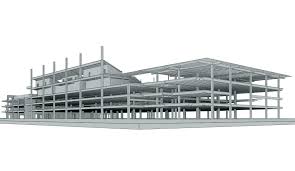In the realm of modern construction and engineering, Building Information Modeling (BIM) has emerged as a transformative technology that revolutionizes how structural design, detailing, and documentation are executed. BIM offers a comprehensive digital representation of a building’s physical and functional characteristics, serving as a central hub for collaboration and information exchange throughout a project’s lifecycle. Within this framework, structural detailing and documentation play crucial roles, ensuring accuracy, efficiency, and seamless project delivery. Let’s delve into the significance of detailing and documentation within BIM structural models and how they contribute to successful construction projects.
Understanding BIM and Its Role in Structural Modeling
BIM is a sophisticated process that involves creating and managing digital representations of physical and functional characteristics of a building. It integrates various aspects of a construction project, including architectural, structural, mechanical, and electrical components, into a single coherent model. The structural aspect of BIM focuses on the design, analysis, and documentation of building structures, such as beams, columns, slabs, and foundations.
In a BIM environment, structural models are not merely static representations but dynamic databases containing detailed information about every element. This information includes geometric properties, material specifications, connections, loads, and more. As a result, BIM facilitates a holistic view of the structure, enabling stakeholders to visualize, analyze, and optimize designs collaboratively.
The Role of Detailing in BIM Structural Models
Detailing in BIM refers to the process of creating precise, accurate, and comprehensive representations of structural elements within the digital model. This involves adding intricate geometric and non-geometric details to components like beams, columns, and connections. Detailing plays a pivotal role in ensuring constructability, clash detection, and accurate quantity take-offs.
Constructability
Detailed structural models aid in visualizing how different components come together in real-world scenarios. This allows for early identification and resolution of clashes or coordination issues before construction commences.
Clash Detection
BIM Structural Modeling Services facilitates clash detection by overlaying various building systems within the model. Detailed structural elements can be analyzed for clashes with architectural, mechanical, or electrical components, minimizing costly on-site interferences.
Quantity Take-Offs
Accurate detailing enables automated quantity take-offs, providing precise material estimations for cost planning and procurement purposes.
Importance of Documentation in BIM Structural Models
Documentation within BIM encompasses the creation of construction drawings, reports, schedules, and other deliverables derived from the digital model. It translates the rich information embedded in the model into accessible and actionable formats for construction teams.
Construction Drawings
BIM enables the generation of high-quality construction drawings directly from the model, ensuring consistency and accuracy across all documentation. BIM facilitates the automatic generation of schedules, including quantities, material specifications, and project timelines, streamlining project management and coordination.
Data Extraction
BIM databases can be queried to extract specific information for analysis or reporting, enhancing decision-making processes during construction.
Advantages of Detailing and Documentation in BIM
The integration of detailed modeling and comprehensive documentation within a BIM environment offers numerous benefits to construction projects:
Enhanced Collaboration
Stakeholders from different disciplines can collaborate seamlessly within a shared BIM model, fostering coordination and reducing errors. Automated detailing and documentation processes save time and reduce manual errors, leading to efficient project delivery.
Accurate Quantification: Detailed models enable precise quantity take-offs, minimizing material wastage and optimizing procurement.
Clash Avoidance: Early clash detection through detailed models helps prevent design conflicts and costly rework during construction. BIM models serve as valuable assets throughout a building’s lifecycle, aiding in maintenance, renovations, and facility management.
Challenges and Future Trends
Despite its myriad advantages, implementing BIM for structural detailing and documentation presents certain challenges. These include initial investment costs, training requirements, and interoperability issues between different software platforms. However, ongoing advancements in BIM technology, such as cloud collaboration, machine learning, and augmented reality, promise to overcome these challenges and further enhance the efficiency and accuracy of structural modeling.
Conclusion
Detailing and documentation within BIM structural models are indispensable processes that drive efficiency, accuracy, and collaboration in construction projects. By leveraging the power of BIM, project stakeholders can create, analyze, and communicate intricate structural information effectively, leading to streamlined workflows, reduced costs, and superior project outcomes. As BIM continues to evolve, its role in shaping the future of construction remains pivotal, emphasizing the importance of adopting this transformative technology in modern engineering practices.

